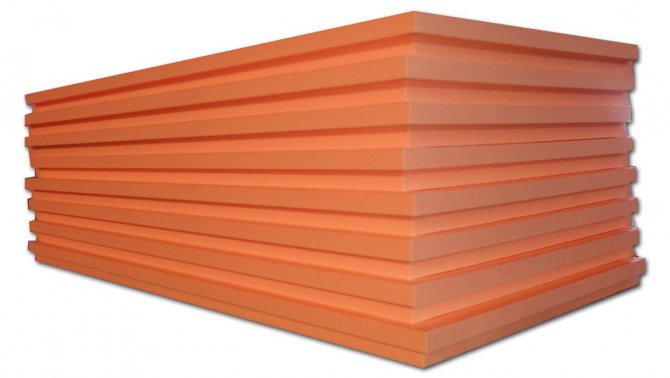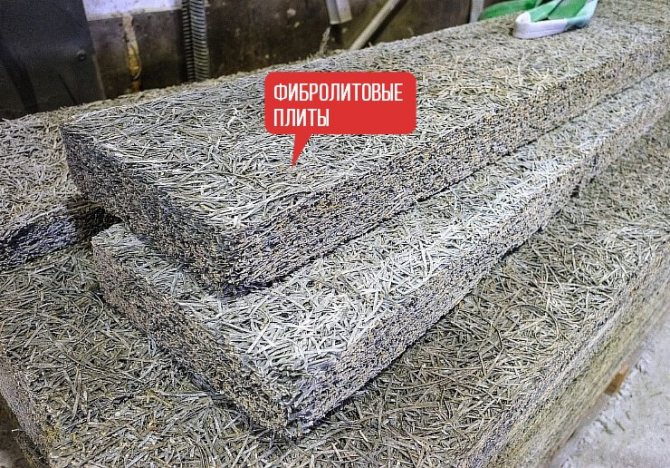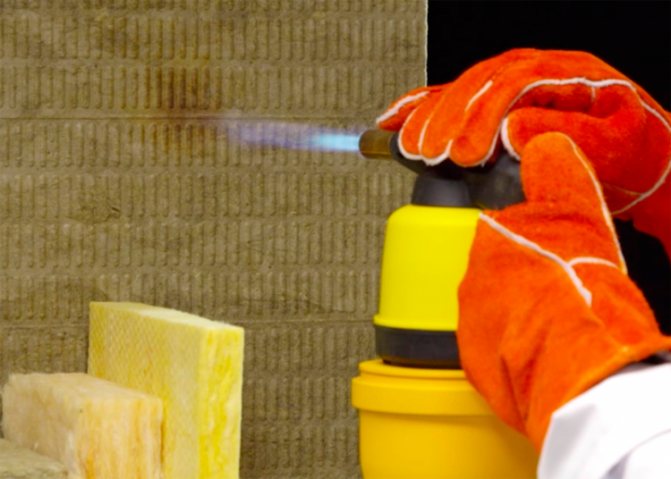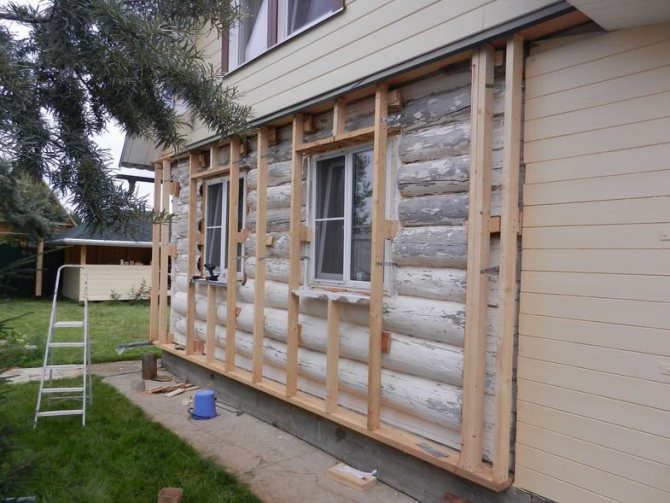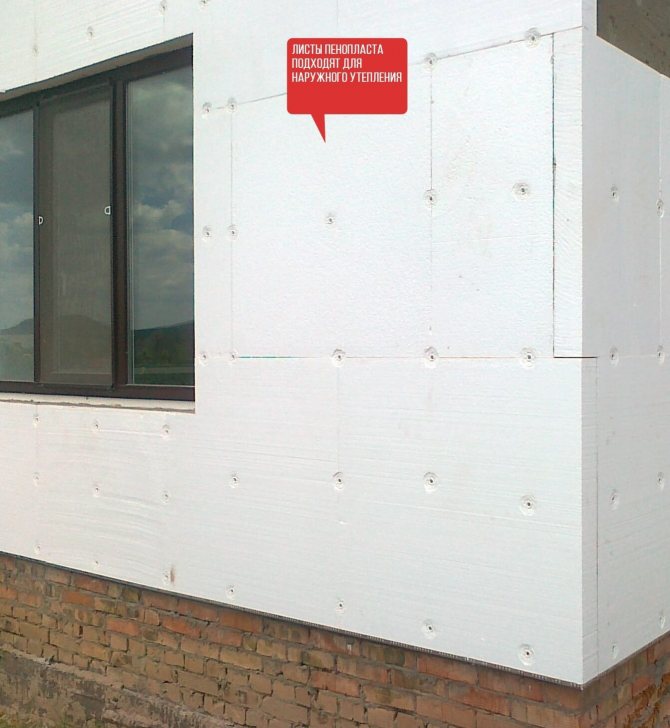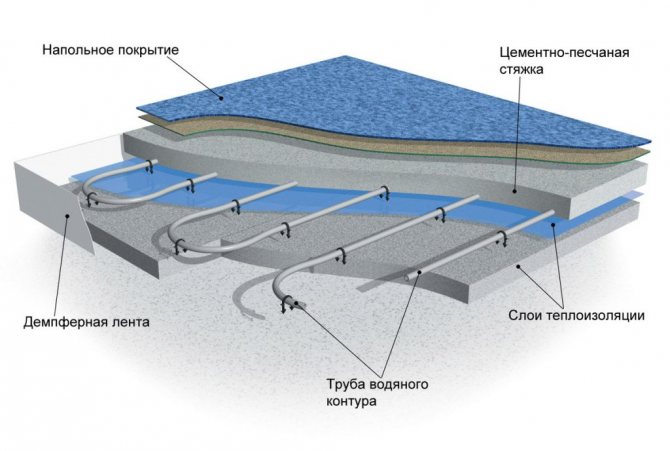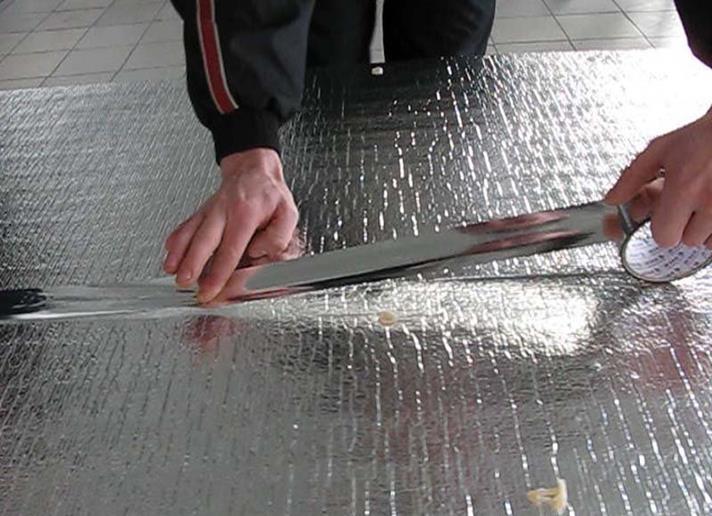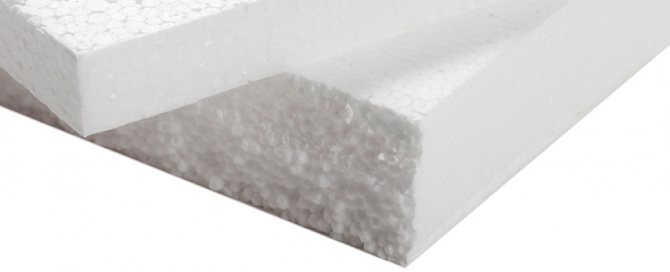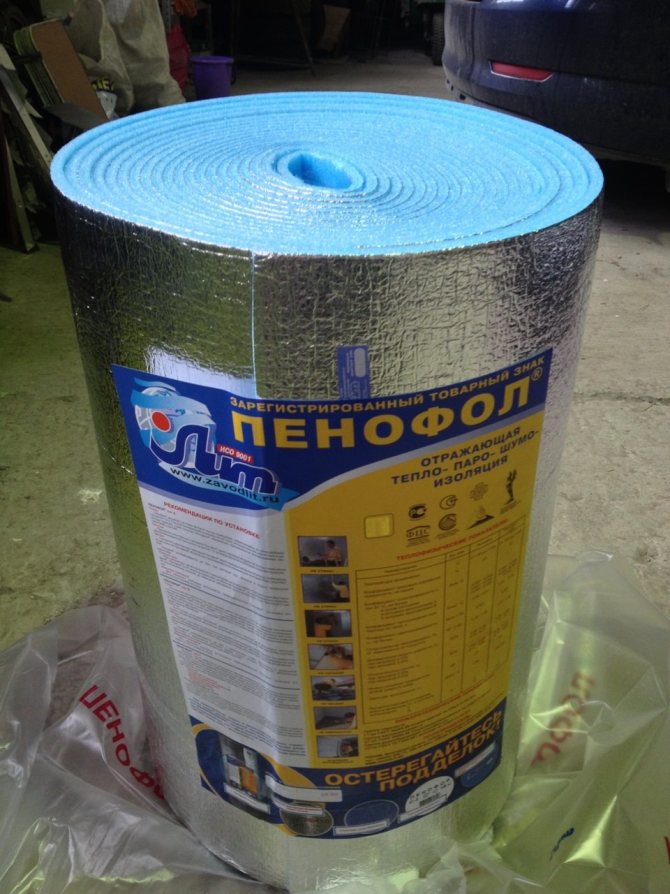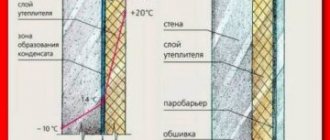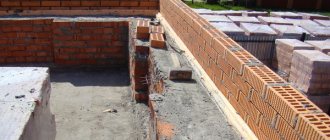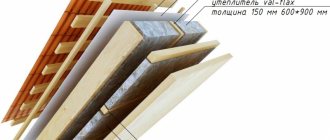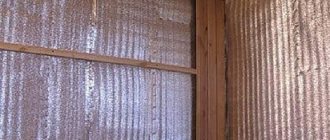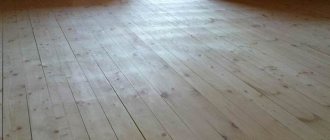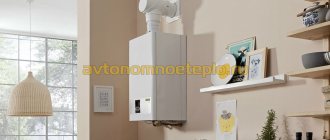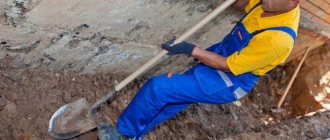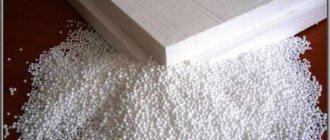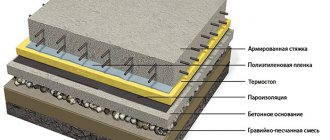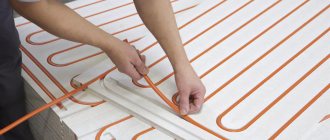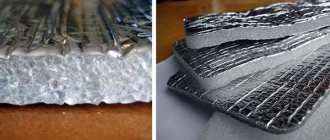A well-made thermal insulation of the bath will ensure the acceleration of heating the room, and the preservation of the required temperature for a longer time. Therefore, the choice of insulation is one of the important points that you should take care of when building a bathhouse.
To do this, it will not be superfluous to first familiarize yourself with various types of heat-insulating materials, and then make an independent decision to purchase one or another product. The information below will help you take a closer look at the materials available to today's consumer.
Properties and application features of the material
The main property that determines the effectiveness of a particular insulation is the thermal conductivity coefficient.
It characterizes the heat loss occurring through a layer of material 1 m thick on an area of 1 m2 for 1 hour with a temperature difference on opposite surfaces of 10 ° C.
https://www.youtube.com/watch?v=rfbJ-9an_RM {amp} amp; modestbranding = 0 {amp} amp; controls = 1 {amp} amp; rel = 0 {amp} amp; showinfo = 1 { amp} amp; enablejsapi = 1 {amp} amp; origin =
For various forms of release of mineral wool, this figure is 0.03 - 0.045 W / (m * K).
A distinctive feature of fiber insulation is the dependence of their thermal insulation properties on moisture content.
When wet, water droplets envelop the fibers and gradually penetrate into the bulk structure, gradually displacing air from there.
An increase in the amount of water inside, between the fibers, leads to a sharp drop in thermal insulation characteristics. The situation is aggravated by the fact that water that has got inside is extremely difficult to get out.
Insulation can take up to 70% of its mass of water. Naturally, under these conditions, the efficiency of his work will tend to zero.
Despite the criticality to wetting, the scope of mineral wool is extremely wide. When building a house, its use is possible almost everywhere where direct contact with water is excluded:
- Hollow walls (frame and brick, made using well masonry technology);
- The outer surface of wood or brick walls;
- Internal partitions;
- Floors;
- Interfloor ceilings;
- Roof.
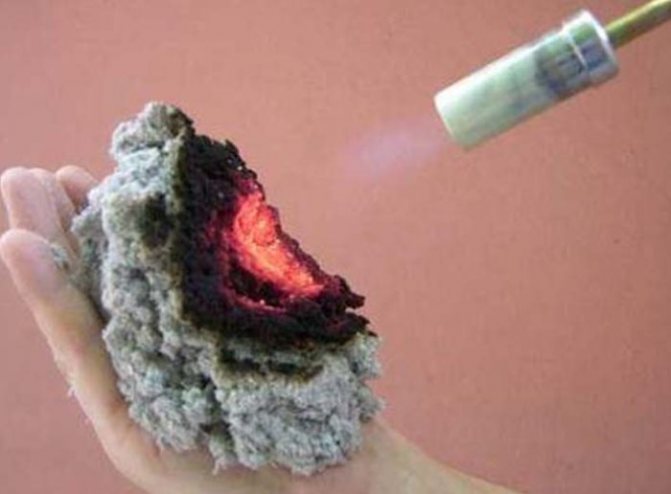
Non-combustible and low-combustible insulating materials are used for thermal insulation of premises, both inside and outside. They are placed in the gap between the main wall and the finish and fixed. The method of installation and fastening depends on the type of insulation.
Inside
Thermal insulation materials of the NG group are used for internal insulation of a room when sheathing walls with gypsum plasterboard or gypsum fiber sheets, installing interior partitions. The insulation is placed inside the frame - between the main and false walls or between the sides of the partition.
Outside
Non-combustible insulation is used to decorate external walls in the following cases:
- Thermal insulation using the "wet facade" technology. Plaster is applied on top of the plate insulation fixed to the walls with special glue. The dried layer is painted or covered with a decorative plaster mixture.
- Installation of ventilated facades. The insulation is attached to the wall with dowels-umbrellas under the frame, on which the selected type of facing material is hung.
- Facade decoration with bricks. The material is fastened or poured into the gap between the main and decorative walls.
Damask
Another natural insulation given to us by the waters of the Black Sea is kamka.It is based on Zostera seaweed, which has short stems and large leaves, reaching a length of 20 centimeters to one meter. Some of the qualities are similar to those of wood. The advantages of zostera are that it is not subject to decay - the leaves thrown out by the storm, which have lain on the sea coast for several years, practically do not lose their thermal insulation qualities.
It is not a material for arranging holes with rodents and does not promote the growth of harmful bacteria and microorganisms. Due to its place of origin, kamka has a perceptible aroma of the sea - it smells of iodine.
This organic material has a fibrous structure and moderate to medium hardness. It is hardly flammable and does not sustain combustion without an open flame source. When smoldering, it does not emit toxic substances. Thermal conductivity, in comparison with a number of other environmentally friendly heaters, is quite high - 0.087 W / m ∙ K. And the packing density is relatively small - about 85 kg / m3.
It is produced in the form of stitched mats with a size of 1000x2000 millimeters and has a thickness of 10 centimeters. All the characteristics and qualities of damask allow it to be successfully used for insulating roofs, ceilings, walls and floors of residential premises. Filling the premises with the smell of iodine, in some cases, even has a therapeutic effect for people suffering from thyroid disease.
Protection of cotton wool from rain before installation
To prevent the basalt insulation from getting wet during installation, it is worth protecting the installation site from rain. For this purpose, it is very convenient to use inventory forests. And on these scaffoldings, on the upper rungs of the upper row, lay boards and stretch the film.
It will turn out cheap and cheerful. Not only building materials will be dry, but also the installers themselves who work on the walls.
To drain rainwater from the film roofs on the scaffolding, it is easiest to use 3-4 drain pipes with a diameter of 110 mm, into which the water accumulating on the film will drain. This will allow you not to get wet under an unexpected "waterfall", when the water, which has no drain, bends the film and gushes down in the "unfortunate" place.
We store the finished cotton wool in bales right next to the walls, preferably indoors. At the same time, it can be served for wall mounting in the windows of the first or second floor, as it is more convenient.
Further, if the wall is deaf, we make a temporary canopy next to it from boards and film. Nothing global is needed, the main thing is that the water flows to the ground, and not to cotton wool. Although it is packed in plastic bales, it is not protection from heavy rain.
Further, we understand that in heavy rain, especially during a prolonged autumn storm, all the water under our feet, the earth does not have time to absorb such an amount of water. We do not put cotton wool in bales and sheets on the ground, even under a canopy. It is best to use the most common wooden pallets. Their height, 15 cm, is enough to prevent cotton wool from getting wet from the ground.
Why is it so cold
I propose to consider what problems the owners of private and apartment buildings often face in the winter months:
- Cold walls;
- Rooms cool down quickly if the heating is turned off;
- Drafts from slopes;
- Drafts between rooms.
According to these signs, you can make the following result - the house must be insulated and it is best to start with the walls and ceiling, because they are the coldest.
I propose to consider with you the elements, poor insulation of which can lead to a loss of heat:
Slag
- Ceiling... This component is checked first, because most of the losses occur through it;
- The insulation of the loggia and the attic is necessarily checked, their condition and suitability so that the warmth remains inside the rooms;
- Walls... This item also includes all doors and windows.Please note that through improperly mounted doors and windows, heat escapes through leaks under the windows to the street;
- Floor... This component must be insulated if you live on the ground floor.
Reasons for wetting insulation on the roof
First, the hydro-barrier or superdiffusion membrane was damaged during the installation process. That is, the tightness of the film is broken with a self-tapping screw or a nail. Also, quite often, this happens due to excessive tension of the hydro-barrier. According to the norms, it must be installed with a slight slack so as not to create stress on the material, and so that condensate water can be collected and discharged at the place of the sag.
We suggest that you familiarize yourself with Sawdust with clay as wall insulation
The second reason may be the lack of adhesion at the joints of the canvases, which leads to the penetration of condensate moisture by ascending wind currents.
The third reason is poor fastening at the junction of the chimney and ventilation pipes. It should be noted that the edges of the hydro-barrier must be fixed vertically, upward, against the wall, and the clamping bar must be installed.
The fourth reason may be the use of low-quality superdiffusion membranes, which are often found in low-cost segments.
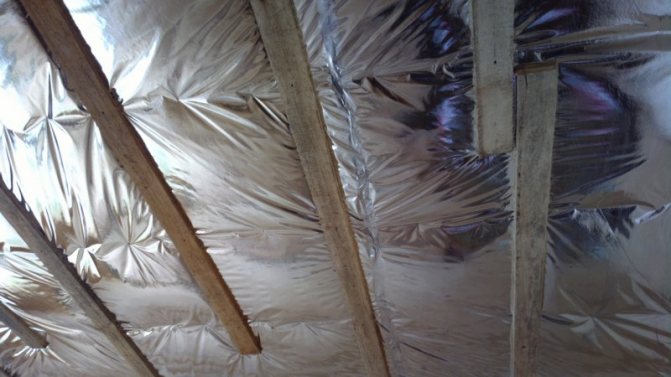

These are the main reasons that occur when working with hydraulic barriers. But water in the insulation, including, may appear due to a poor installation of the vapor barrier.
This happens especially often when wet works are carried out in the house in the autumn-winter time, and the roof is already insulated. At the same time, the temperature difference inside and outside the room is noticeable, and all condensate, rushing upwards, gets into the insulation, if your vapor barrier is not glued, or is not glued tightly at the joints.
Check the tightness of the films until they are completely closed, be sure to glue the joints and abutments to the walls.
Take out and dry, or purchase a new insulation. But it should not be left wet, in the rafters, as mold can form on the tree.
Remember that only professional builders, or the developers themselves, who have thoroughly studied these technologies, should perform insulation work.
Mineral wool gets wet in the attic, maybe for at least several reasons. Due to a leak or damage to the roof, improperly positioned vapor barrier, lack of ventilation or errors in its execution. Regardless of the reason, the result is the same. Mineral wool is wet. Does this cotton wool still fulfill its role? How to dry it?
Mineral wool, first of all, insulates. Protects from cold in winter, protects from heat in summer. Increases fire resistance, provides sound insulation, thanks to which the house becomes quieter. When choosing mineral wool, it is worth putting on products with increased hydrophobization. These are materials from which moisture evaporates very quickly.
It must be remembered that you cannot install wet mineral wool. If it happens that the cotton wool gets wet during transportation or storage, you should first unfold it and dry it thoroughly. Only after it dries can you start installing it.
Ecowool
It is a breathable insulation made up of eighty percent cellulose fiber, which is simply waste paper. Twelve percent of the total composition is an antiseptic, represented by boric acid, and the last eight percent is borax, which acts as a fire retardant. Ecowool is also classified as environmentally friendly materials.There are three ways to use insulation:
- Manual. The insulation is fluffed in a large container using a mixer nozzle on an electric drill or perforator. Specialists have a "gun" device for applying this insulation. Then they are stuffed by hand into prepared cavities or niches in the quantities provided by the process technology.
- Mechanized or dry.Everything is exactly the same as with manual laying of insulation, only for large volumes of work, cellulose fiber is blown using a compressor or the same pistol. This greatly simplifies and speeds up the work process.
- Mechanized wet laying. Ecowool is fluffed up in a special bunker of a blow molding machine, and blown out under pressure, moistened with an aqueous solution through special nozzles. If necessary, an adhesive composition can be added to the cotton wool.
The indisputable advantages of this material are:
- Waste-free - nothing needs to be cut, only the required amount of dry mix is used.
- Seamless styling. The material is applied or laid in a monolithic, integral layer, leaving no joints or seams to form cold bridges. In addition, the method of its application prevents holes and cracks from appearing in the insulation layer.
The disadvantage of working with ecowool is that the manual method is unnecessarily laborious, and with mechanized blowing, it is impossible to do without special equipment and qualified specialists. By the way, the necessary equipment can be rented.
Error-free ventilation
One of the more common causes of wet mineral wool is roof ventilation problems. Good ventilation allows air to circulate over the insulation, which allows condensate to evaporate systematically from it
That is why careful manufacture of roof ventilation is so important
Arkady Schelyunin, Astrakhan. Question: Good afternoon, it started raining, autumn. We did not have time to make cotton wool on the facade of the expanded clay concrete house. How to be now? It rains every day. We are afraid that the cotton wool will get wet. Then winter. How to dry it?
Sergey Zaitsev, Moscow, specialist.
Answer: Good afternoon, Arkady. In response to your question, I can advise you the following. First, you are correct. If it falls under heavy and prolonged rain, then it will absorb moisture. Despite all the advertising assurances of the manufacturers, in the photo with beautiful drops of water on cotton wool, nevertheless, the basalt insulation absorbs moisture and is very excellent.
Therefore, it is impossible to wet it in heavy rain. If, during the installation process, the cotton wool on the walls gets wet with rain, it's not scary. But if you keep it in the rain for a day, then you will not be able to actually dry it before installation.
So, we are doing 3 things.
We suggest that you familiarize yourself with How you can insulate the door to the bath
Ecoterm
Ecoterm is an eco-friendly insulation, which is 70% flax and 30% bicomponent polyester fiber. This fiber is the one that gives it sufficient strength and resilience. The ability to keep their shape well is an additional advantage during installation - slabs can be installed between beams and joists without additional fasteners. The main advantages of linen insulation:
- Durability - Expected service life of 60 years.
- Safe insulation. This means that it is completely hypoallergenic, leaving a pleasant sensation from the touch.
- Not subject to electrification.
- Antiseptic - parasites do not start in it, perfectly absorbs odors and purifies the air.
- Breathable - absorbs and releases moisture well, regulating heat exchange and humidity.
Natural antiseptic, absorbs excess moisture well and prevents the formation of mold and mildew. By its properties, the fiber is close to wood, and the use of linen thermal insulation in a frame house will help you easily get the effect of a “house made of logs” - the material allows the walls to breathe.
Flax is non-flammable, hardly flammable, and even when burning does not emit hazardous substances. In terms of fire safety, it is comparable to good quality basalt wool. Has excellent sound insulation. The use of plant fiber makes linen one of the safest insulation materials. It is produced in the form of plates with a thickness of 50 and 100 millimeters.
The qualities and properties of linen insulation allow you to work with it without fear, even when installing thermal insulation in children's rooms.
Wet business how to deal with wet insulation
Finding that the insulation is soaked, there are two options for the development of events. If the fibers are wet only on the top and in a small area, it is possible to dry this area. This requires two conditions: a draft and clear warm weather.
URSA experts recommend replacing the insulation that is wet through and through. The main thing is to avoid the same mistakes when editing new material.
To protect your newly insulated roof from getting wet, consider our professional advice:
- it is advisable to carry out installation in dry weather;
- before installing the mineral wool, cut the waterproofing film into layers of the required length;
- after fixing the insulation, immediately cover it with a protective membrane;
- glue the joints of the film, fix it on the rafters with a construction stapler;
- only walk on the boardwalk to avoid tearing the waterproofing.
Foamed perlite
This is a fairly new material, so the builder is wary of it.
This type of insulation is of natural origin and is obtained from solidified volcanic lava. First, perlite is crushed to granules, and then impregnated with waterproof compounds. Thus, a free-flowing insulation for fear of water is obtained.
Perlite is also sold as slabs. To do this, the granules are mixed with cellulose and pressed.
In its properties, foamed perlite is similar to foam glass. It is lightweight, easy to handle, moisture and mildew resistant, high pressure resistant, recyclable.
Application area
Roof. Mainly used for flat roofs. For pitched roofs, it will be heavy and will create a serious load on the rafters.
Walls. Recommendations are the same as for foam glass - use as backfill insulation.
Overlapping. Great for overlapping. Perlite in the form of granules is often used as a leveling layer for further laying the floor.
Foundation, blind area. Foamed perlite can be used for structures exposed to water only in the form of granules. Plates are not suitable in such cases, since the cellulose added to them absorbs moisture.
Hence, we can conclude that perlite for the lower part of buildings can be used as a filler when installing a warm blind area.
When you need a ventilation gap ventilation gap in a frame house
So, if you are thinking about whether you need a ventilation gap in the facade of your red house, pay attention to the following list:
- When wet If the insulation material loses its own properties when wet, then the gap is necessary, otherwise all work, for example, on the insulation of the home will be completely in vain
- Steam admission The material used in the walls of your home allows steam to pass into the outer layer. Here, without the organization of free space between the surface of the walls and insulation is simply necessary.
- Preventing excess moisture One of the most common questions is: Is there a need for a ventilation gap between the vapor barrier? In the case when the finish is a vapor-insulating or moisture-condensing material, then it must be constantly ventilated so that excess water is not retained in its structure.
As for the last point, the list of similar models includes the following types of cladding: vinyl and metal siding, profiled sheet. If they are tightly sewn onto a flat wall, then the remnants of the accumulating water will have nowhere to go. As a result, materials quickly lose their properties, and also begin to deteriorate externally.
Answering the question of whether a ventilation gap between siding and OSB is needed (from English - OSB), it is also necessary to mention its need. As already mentioned, siding is a product that insulates steam, and the OSB board consists of wood chips, which easily accumulates moisture residues, and can quickly deteriorate under its influence.
Let's look at a few more mandatory points when the clearance is a necessary aspect:
- Preventing the formation of rot and cracks The wall material under the decorative layer is prone to deformation and deterioration under the influence of moisture. To prevent rot and cracks from forming, it is enough to ventilate the surface, and everything will be in order.
- Preventing the formation of condensation The material of the decorative layer can contribute to the formation of condensation. This excess water must be removed immediately.
For example, if the walls of your house are made of wood, then the increased level of moisture will negatively affect the condition of the material. The wood swells, begins to rot, and microorganisms and bacteria can easily settle inside it. Of course, a small amount of moisture will collect inside, but not on the wall, but on a special metal layer, from which the liquid begins to evaporate and be carried away with the wind.
Soft fibreboard (fiberboard)
The natural type of insulation is obtained from woodworking waste. Shavings and sawdust are crushed to a state of dust, astringent, antifungal components are added. A homogeneous mass is obtained, which is then dried and plates are produced.
There are also solid fiberboard, which in the Western manner is called MDF, which in English sounds like medium density fiberboard. Solid boards are not insulation and are more related to finishing materials, such as plywood, OSB, chipboard, etc.
This type of insulation is strong enough, withstands high loads, has good heat-shielding properties, but is afraid of moisture. Hence its application follows. Usually soft fiberboard is used to insulate walls and floors.
This type of insulation has been used for several decades, but recently soft fiberboard has been used less and less. It was replaced by more modern heaters with higher performance.
Protection of basalt insulation after installation
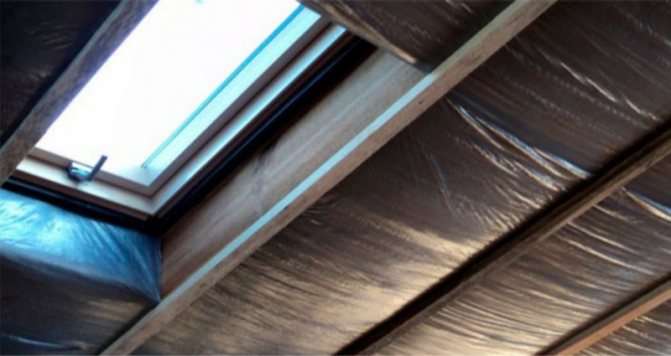

And, of course, immediately after the installation of a section of basalt insulation on the wall, this section is closed. This protects the already installed cotton wool on the walls from slanting rain.
The membrane itself does not tolerate ultraviolet light very well, so you must not hesitate with the subsequent decorative coating - siding or whatever you have chosen.
We offer you to familiarize yourself with How to fix penoplex to concrete? -
If you are not doing a ventilation facade, but, then you shouldn't worry too much. The plaster layer will calmly cover the cotton wool, it will still get a little wet during the installation process.
- The question is asked by Andrey Sukhorukov, Perm: Hello, dear colleagues! Would you like to clarify how you can protect vinyl siding from the sun and frost? I look at the neighbors ...
- Do you personally think that the rising prices for electricity and gas make you think about saving energy resources? Try to answer this question honestly. If yes, then this material ...
Mansard roof insulation offers three benefits in one solution. Firstly, the house becomes noticeably warmer. Secondly, heating costs are reduced by 30-50%. Well, and third: a residential floor appears. We trimmed the walls - and instead of a cluttered attic we got cozy rooms under the roof.
Popular roofing insulation is mineral wool. Material with excellent performance, non-flammable and affordable cost.
Bung
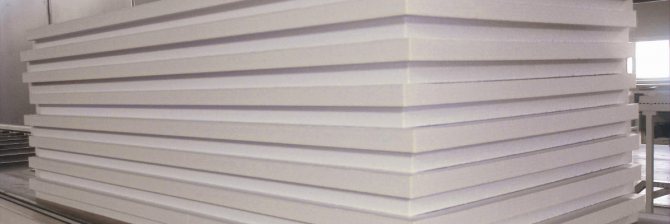

This eco-friendly insulation for walls and floors is made from the bark of branches or trunks of cork oak, which is widespread in the Mediterranean. The material has a cellular structure - there are up to 40 million cells in a square centimeter, filled with a special gas that resembles air in composition, but does not contain carbon dioxide.
The inner layers of the cork contain suberin - a natural glue, which is sufficient in the manufacture of cork insulation so that no additional synthetic adhesives are added during the agglomeration process. The wax protects against water penetration into the structure.Both of these components give the cork its firmness and elasticity.
The material does not burn without a source of open flame. Poorly flammable. When smoldering, it does not emit toxic vapors and substances.
Cork insulation is produced in the form of rolls of 1000x100 millimeters in size, plates or plates with a thickness of 1 millimeter to 5 centimeters. It is used for insulation of floors and walls of residential premises and premises with high humidity, and thanks to excellent sound insulation - and music studios.
When vapor barrier is needed
It is unambiguously enough to simply formulate the condition whether a vapor barrier is needed. When insulating with mineral wool, protection against water vapor will be needed when there is a possibility of contact with air coming from the side of the room.
To ensure efficient operation, each layer of the insulating “cake” must be more or less air permeable. This ability should increase from room to street.
Thus, warm air from the room very slowly seeps between the fibers, displacing the cold air from there.
These can be vertical frame racks, floor joists or rafters. On the outside (outside) side, a wind-waterproofing barrier is arranged, which protects against the effects of precipitation and strong direct wind.
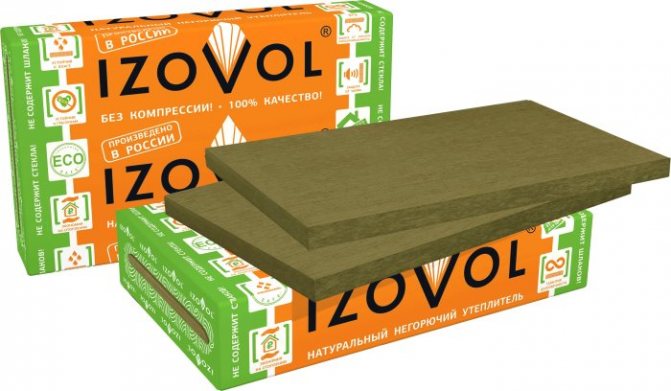

This scheme is valid when making frame walls, floors, attic roof, residential floor ceiling in the presence of a cold attic on top.
Internal partitions and floors between living quarters require a slightly different approach. In this case, humid air can penetrate the mineral wool from any side. To maintain the thermal performance of the structure, a vapor barrier is installed on both sides.
Excess moisture is removed through the ventilation gap left under the external decorative facade.
Hemp
As a heater for a wooden house, hemp has recently been widely used. Generously endowed by nature with antiseptic properties, it is not susceptible to the formation of fungus and mold itself and helps to protect the structures of the house from them. It does not lose its qualities and properties under the influence of water - thanks to this, it is used when insulating rooms with a high level of humidity.
The hemp campfire is approximately 70% of the woody hemp stem, obtained by kneading or scuttling. 45-55% of the material consists of cellulose and does not contain synthetic additives, being a natural, environmentally friendly insulation.
Hemp is used to insulate roofs, ceilings and walls of houses.

